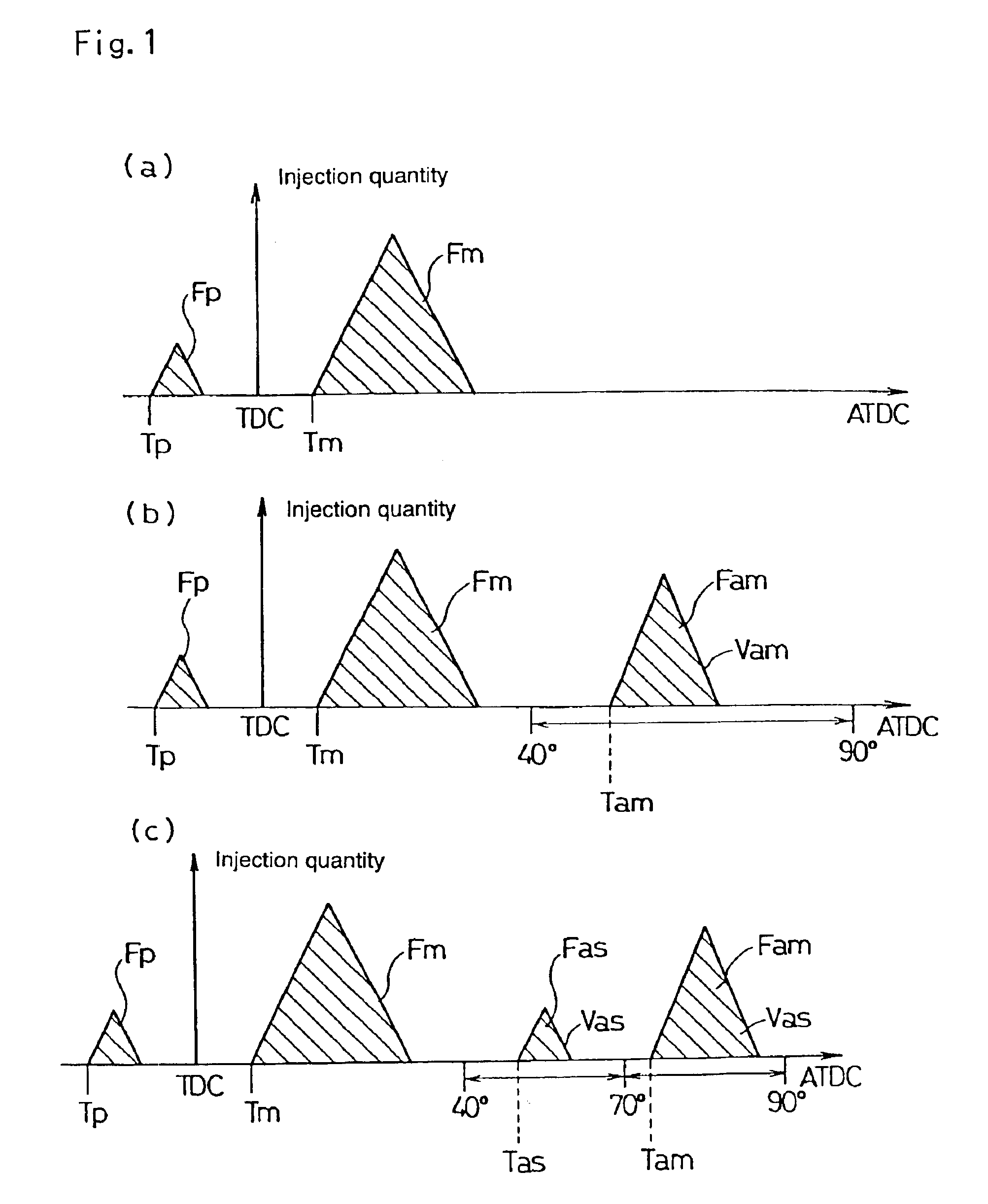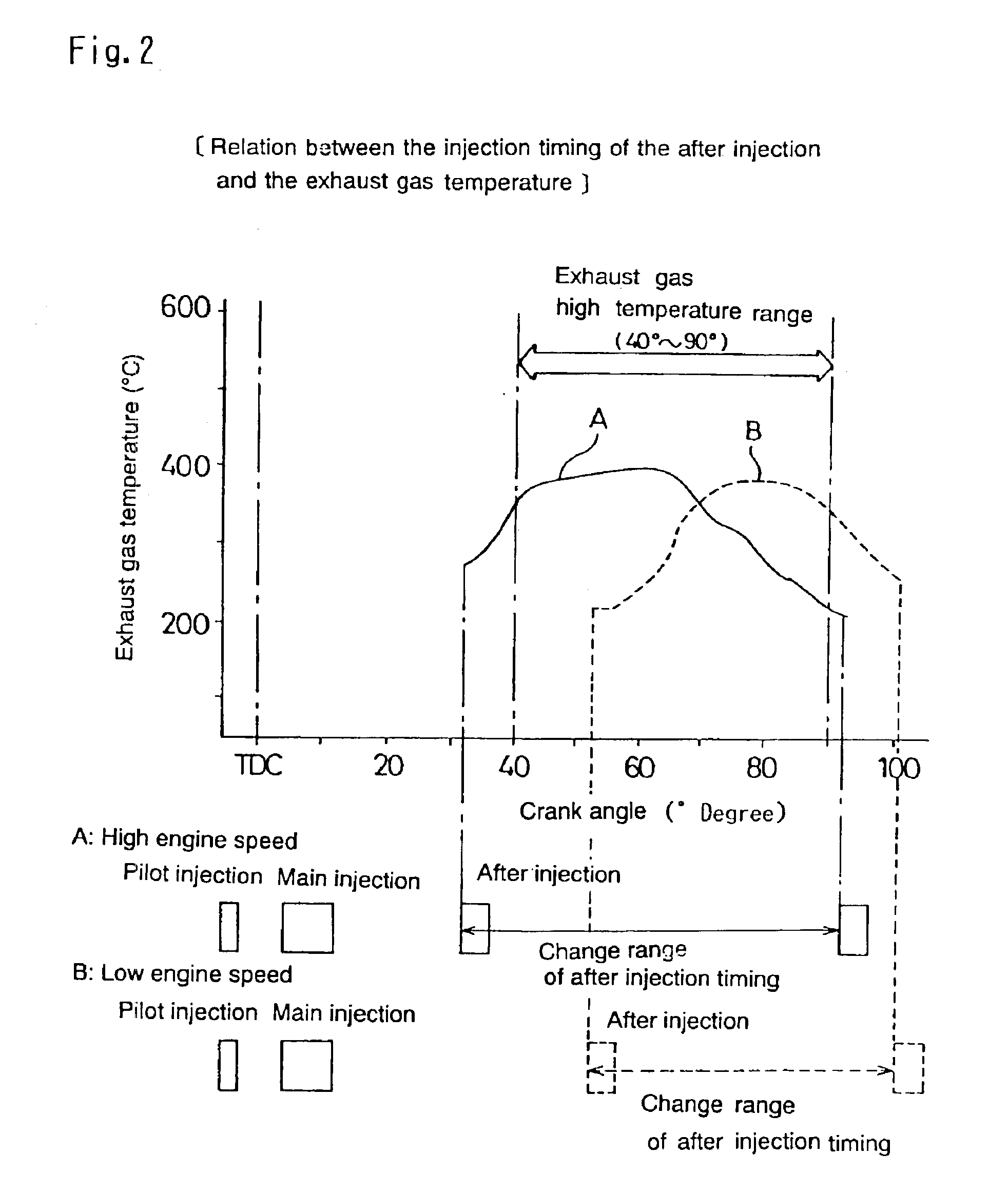Fuel injection control method for diesel engine and regenerative control method for exhaust gas after treatment device
a technology of regenerative control and diesel engine, which is applied in the direction of mechanical equipment, electric control, machines/engines, etc., can solve the problems of increasing the size and cost of the system, deteriorating fuel efficiency, and difficult regeneration control, so as to suppress the variation in engine speed and torque, low load operation, and the effect of reducing the drivability
- Summary
- Abstract
- Description
- Claims
- Application Information
AI Technical Summary
Benefits of technology
Problems solved by technology
Method used
Image
Examples
third embodiment
[0154]In the diesel engine fuel injection control method of the third embodiment concerning the injection quantity of the pilot injection and the injection quantity of the main injection, pilot injection Fp and main injection Fm as shown in FIG. 6(a) are performed during the execution of the normal pilot injection. The injection quantity of this pilot injection Fp is a prescribed value and, a previously established fixed quantity.
[0155]There, the injection quantity of the main injection Fm is increased / decreased when it becomes necessary to rise the exhaust gas temperature, or, generate temporally an exhaust gas of reductive atmosphere by lowering the oxygen concentration in the exhaust gas, in order to rise the catalyst temperature of the exhaust gas post-treatment apparatus, regenerate NOx occlusion reduction type catalyst, or regenerate the filter by burning and eliminating PM caught by the DPF.
[0156]For this increase / decrease of the injection quantity of the main injection Fm, i...
example
[0199]An example of fuel injection control involving a multistage auxiliary injection of the fourth embodiment of the present invention is shown in FIG. 12, while a comparative example of fuel injection control involving a pilot injection of the prior art is shown in FIG. 13. It should be appreciated that the engine operation condition at that time, is 1,000 rpm in engine speed, under no load.
[0200]In the example of fuel injection control involving a multistage auxiliary injection shown in FIG. 12, the first auxiliary injection (injection quantity=2.0 mm3 / st) is performed at 8° ATDC, the second auxiliary injection (injection quantity=3.5 mm3 / st) at 20° ATDC, and the main injection (injection quantity=4.6 mm3 / st) at 33° ATDC, to obtain a inlet exhaust gas temperature of 350° C. and an exit exhaust gas temperature of 410° C. in the DPF apparatus.
[0201]On the other hand, in the comparative example of fuel injection control involving a pilot injection shown in FIG. 13, the pilot injecti...
PUM
 Login to View More
Login to View More Abstract
Description
Claims
Application Information
 Login to View More
Login to View More - R&D
- Intellectual Property
- Life Sciences
- Materials
- Tech Scout
- Unparalleled Data Quality
- Higher Quality Content
- 60% Fewer Hallucinations
Browse by: Latest US Patents, China's latest patents, Technical Efficacy Thesaurus, Application Domain, Technology Topic, Popular Technical Reports.
© 2025 PatSnap. All rights reserved.Legal|Privacy policy|Modern Slavery Act Transparency Statement|Sitemap|About US| Contact US: help@patsnap.com



